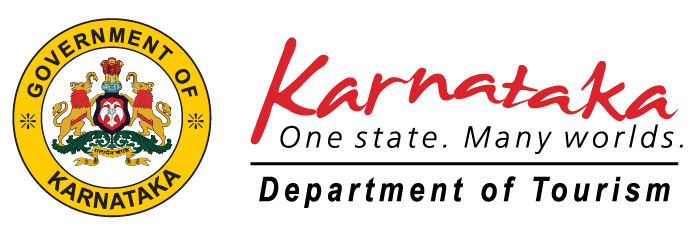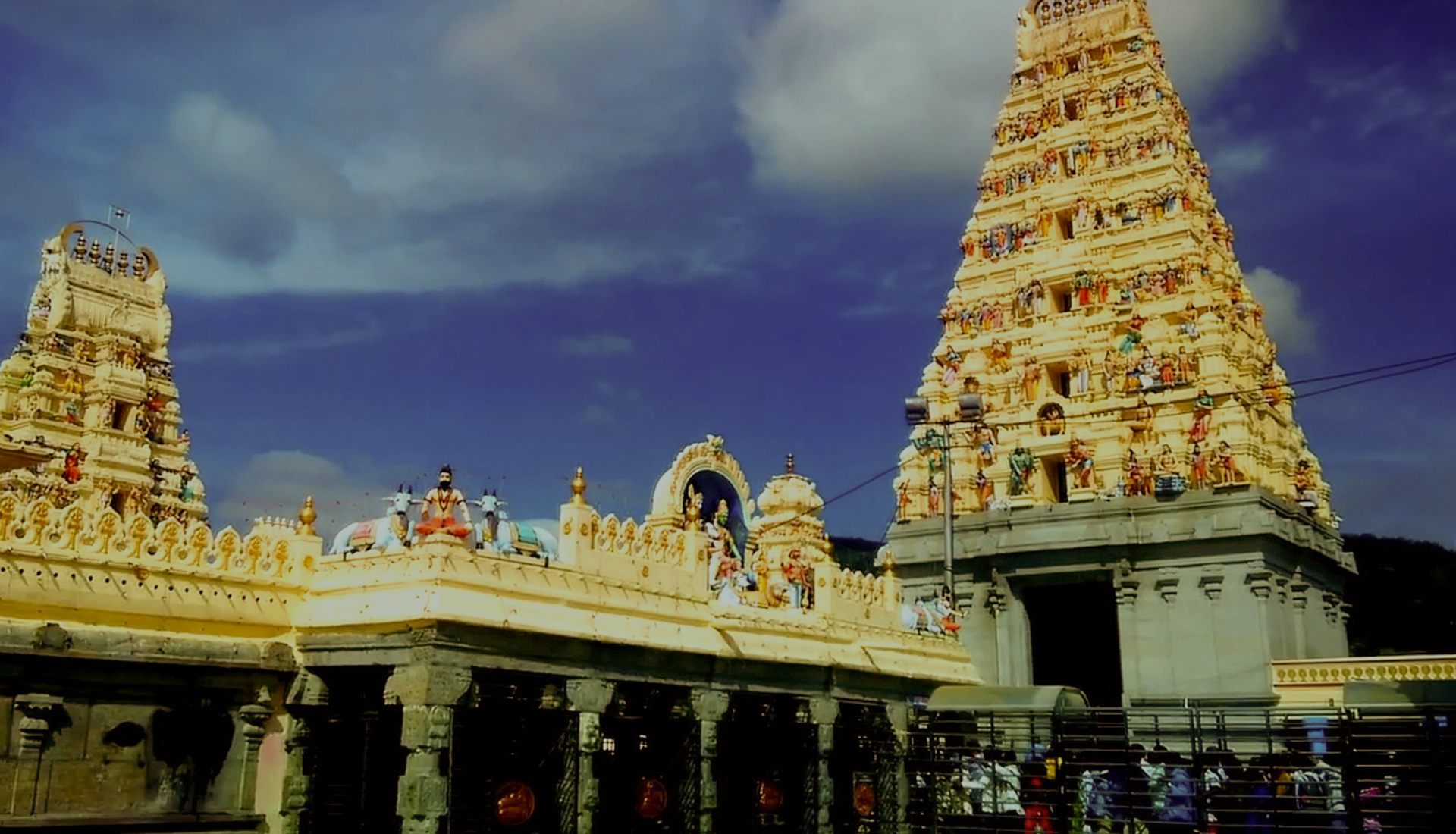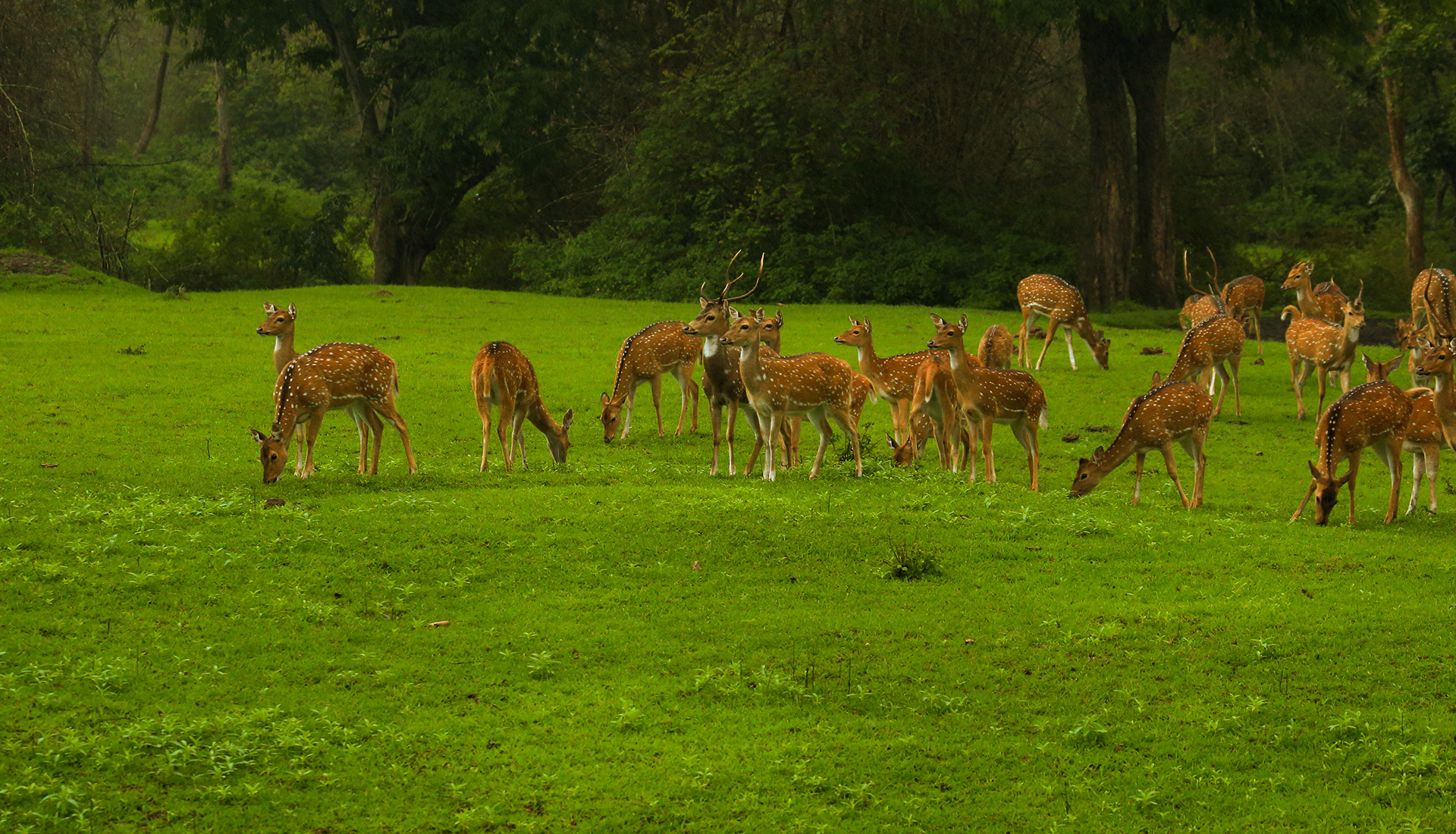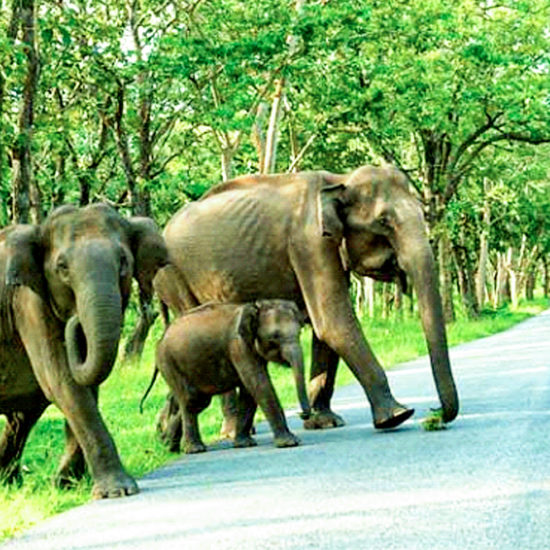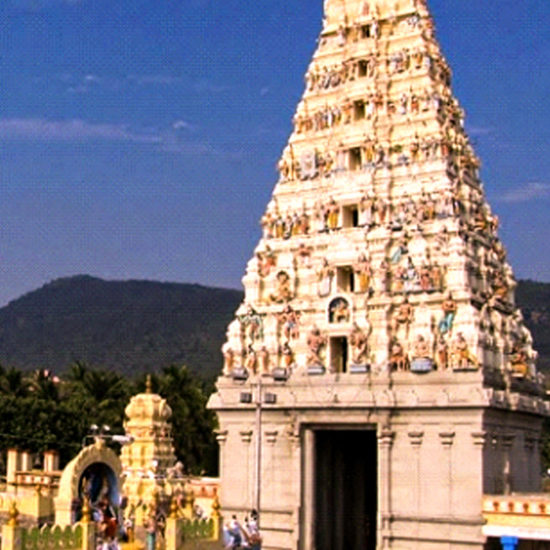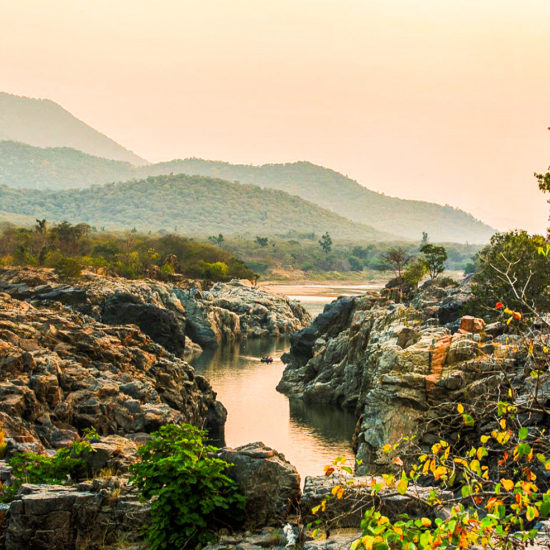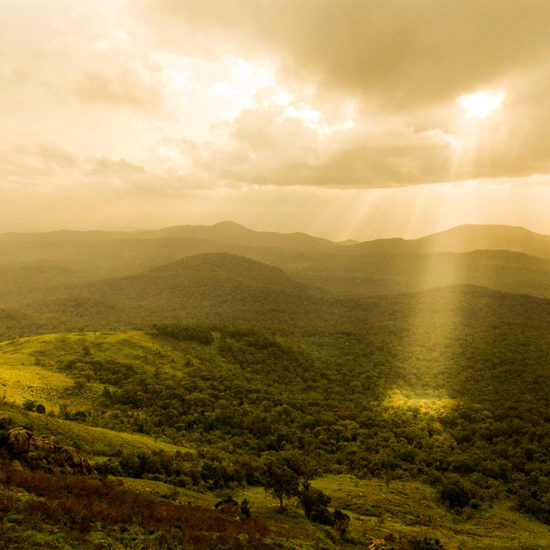Being the southernmost district of Karnataka, Chamarajanagar district shares its borders with the states of Tamil Nadu and Kerala. Chamarajanagar was earlier known as Arikutara, which was changed by Krishnaraja Wadiyar III in memory of his father Chamaraja Wadiyar who was born at this place and also constructed the Chamarajeshwara Temple, a monument of considerable beauty.
Geographically, it is surrounded by Mysuru, Mandya, Ramanagara districts to the north, Tamil Nadu state to the east & south and Kerala to the west.
Chamarajanagar is a district blessed with diverse wildlife areas and enchanting hills which includes the much acclaimed Bandipur National Park along with Biligiri Rangaswamy Temple (BRT) Wildlife Sanctuary, BR Hills, Himavad Gopalaswamy Betta, Male Mahadeshwara Hills being the major wildlife/ hill stations attractions in this place. A jeep safari into Bandipur or BRT and a stay at the state-owned Jungle Lodges & Resorts is the best way to experience this pristine wildlife.
Having many pristine forests, Chamarajanagar is also home to several tribal communities including Betta Kurubas, Yerawas and Soligas. Kamsale dance is a popular local tradition and art form of Chamarajanagar which is closely associated with the rituals of Male Mahadeswara worship.
For further information, visit the official district website click here!
Fast Facts
Tourist offices
Office of the Deputy Director
Department of Tourism
2nd Floor, Room No. 17,
Deputy Commissioner Bhavan,
Chamarajanagar
Tel: 08226-226512
Cell: 09481815220 (TO),
09886070411 (DTC)
Quick Links
Nature & Wildlife
- Bandipura National Park: Bandipur National Park is regarded as one of the most beautiful and the better-managed national parks of India. Located amidst the picturesque surroundings of the towering Western Ghats on the Mysore-Ooty highway in Karnataka, it is an important part of the Nilgiri Biosphere Reserve that constitutes Karnataka’s Rajiv Gandhi National Park (Nagarahole) to its Northwest, Tamil Nadu’s Mudumalai Wildlife Sanctuary to its South, and Kerala’s Wayanad Wildlife Sanctuary to its Southwest. The total extent of Bandipur National Park is 872.24 sq.km. It is located partly in Gundlupet taluk of Chamarajanagar District and partly in H.D.Kote and Nanjangud taluks of Mysuru District. Once the private hunting grounds of the erstwhile Maharajas, and nestled at the foothills of the Nilgiris, Bandipur has had a long tryst with tigers. One of the thirty reserves identified across the country to save the tiger and its habitat, it’s also one of the last refuges of the endangered Asiatic wild elephant. Apart from the two famed residents, a number of other endangered species such as sloth bears, gaurs, Indian rock pythons, jackals, muggers and four-horned antelopes can be spotted in this national park. Bandipur also shelters sambar, mouse deer, chital, sloth bear and the rare flying lizard. Over 200 species of birds and a diversity of flora add to its attraction. Bandipur also supports a wide range of timber trees including teak, rosewood, sandalwood, Indian-laurel, Indian Kino tree, giant clumping bamboo etc.Though Bandipur is around-the-year tourist destination, summers are the best time for wildlife sightings. March to May being the dry season, the animals come out of hiding and can be spotted by the watering holes. But for bird-watchers, the winter months are a better bet, for November to January, many migratory birds from the North, especially the Himalayas come down south to roost.The Bandipur Safari Lodge (a property of state-owned Jungle Lodges & Resorts) is the best way to experience Bandipur. You can go on a wildlife safari or indulge in nature walks here. The Bandipur Safari Lodge is built in contemporary architectural style; however, there are no television sets and air conditioning here. With well-appointed rooms, it can accommodate up to 60 persons at a time.Forest Safari is conducted by the Forest Department twice daily. Visitors in large groups can avail bus safari which is cheaper and shorter (45-60 mins) while jeep safaris are more suitable for smaller groups and for a longer, more exclusive experience (lasts 2-3 hours)- both operate between 6 to 9 AM and 3 PM to 6 PM. Elephant Safari is available between 10 AM and 11 AM.
- Himavad Gopalaswamy Betta:Gopalaswamy Betta (hill) is a lofty hill in picturesque surroundings, which is situated about 16 km south-west of Gundlupet. It rises to a height of 4,770 feet above the sea level. It has been also referred as Dakshina Govardhanagiri. The summit of the hill appears to be enveloped by clouds and mist, and hence the name Himavad Gopalaswamy Betta (Himavad means covered in mist). There is an old fort on the hill said to have been constructed during 13th century. Inside the fort is the Gopalaswamy Temple dedicated to Lord Krishna. The gopuram of the temple is single-tiered and rests on the compound wall of the enclosure. The parapet wall of the facade of the mukha mantapa contains the sculpture of dashavatara (the avatars of the Lord Vishnu). The garbhagriha contains an idol of Lord Krishna playing a flute under a tree. The idol of Lord Krishna is beautifully sculpted with the left toe resting on the right one.
- Male Mahadeshwara Hills: Male Mahadeshwara Betta is a well-known pilgrimage centre in the State. It is a hill range located in the Hanur taluk and is 3,200 feet above sea level. It is told that MM Hills constitutes of seven hills ‘Elu Male’ namely Anemale, Jenumale, Kadumale, Kanumale, Ponnachimale, Pavalamale and Pachchemale. The ancient and sacred temple dedicated to Lord Shiva is a very popular Shaiva pilgrim centre. The deity of the temple is in the form of a linga. According to records, a Veerashaiva Saint, Mahadeshwara who lived during 14th-15th centuries, settled on the top of this hill and attained samadhi (salvation). He had a large number of devotees and thus this area became a sacred place. In his honour, the temple was constructed here. There is also a considerable large image of Nandi (Lord Shiva’s vehicle) here along with a number of other shrines around the place. Around a lakh of devotees from South India congregate here for the Car Festival held during the festivals of Shivarathri, Ugadi, Gauri festival, Mahalaya Amavasye and Deepavali. There are many folk songs in Kannada which sing praises of Male Mahadeshwara Hills/ Temple.
- BR Tiger Reserve and Wildlife Sanctuary: Biligiri Ranganatha Swamy Temple (BRT) Wildlife Sanctuary takes its name from the ancient Ranganatha Swamy Temple that sits at the edge of a precipice and has an extent of 539.52 sq km. The Biligirirangana Betta (hill) is at a height of 5,091 feet above the sea level, and stretches from north to south for about 16 km. It is considered to be the wildlife corridor that connects the Eastern Ghats to the Western Ghats which in turn facilitates the gene flow between the population species inhabiting both the mountain ranges. The hills are covered with a variety of species of plant life, including scrub, dry deciduous, moist deciduous, shola forests and montane grasslands. It provides shelter to many species of wildlife like mammals, reptiles and a variety of butterflies. The forests also teems with over 250 species of birds.A unique attraction is the Dodda Sampige Mara (a large Michelia Champaka tree), believed to be over 2000 years old and worshipped by the Soliga tribe. Vivekananda Girijana Kalyana Kendra located here displays preserved tribal information and the biodiversity of the region. There are many trekking trails here, including one that leads up to Honnametti, the highest point of the range. Another attraction here is the Honnametti Kallu – a boulder in the hilltop. A unique aspect is that it gives a metallic clang when stuck. The local Soliga tribes living here believe that the rock has gold inside.Another attraction of the Biligiri Ranganatha Hill is the famous Biligiri Ranganatha Swamy Temple from which the hill takes its name. The deity in the temple is actually Lord Venkatesha, popular as Ranganatha. Figures of Ramanuja and Alvars are placed in the temple. Kanakadasa cave, Brindavana and other shrines in the range are of religious interest. There are ruins of an old fort called Kanchikote, stated to have been built by the Gangaraja of Shivanasamudra (during the 15th-16th centuries).The best place to experience BR Hills is the Kyathadevara Gudi (K Gudi) Wilderness Camp, a property of Jungle Lodges & Resorts and opens up an opportunity for you to get up close and personal with nature. The camp comprises of tented cottages, log huts and well-furnished rooms.
Tourist Attractions
- Hogenakkal Waterfalls: Hogenakkal waterfalls is a scenic amalgamation of rock, water and mist located on Karnataka-Tamil Nadu border. ‘Hoge’ means smoke and ‘Kallu’ means rock in Kannada. Hogenakkal essentially means smoke over the rocks, which is how it looks when there’s ample water falling over the rocks as river Kaveri enters Tamil Nadu from Karnataka.
- Bharachukki Falls: The island of Shivanasamudra has two beautiful falls formed by Cauvery River. The Barachukki Falls is on the eastern branch of the river which is located in Kollegal taluk in Chamarajanagar district. A great volume of water rushes and cascades down to about 30 feet here. The western branch of the river forms the Gaganachukki Falls which is located in Malavalli taluk which falls in Mandya district. The two falls in full flow during the monsoons is a captivating sight.
- Kundura Betta: 30 kms from Kollegala, Kundura Bettais an offbeat rocky mountain. Ideal for trekking
- Dodda Sampige: 4 kms from BR Hills, River Bhargavi, a tributary of Kaveri flows in Dodda Sampige.
Religious Places
- Ramalingeshwara Temple, Narasamangala: Narasamangala is a village situated around 24 km from Chamarajanagar. It is home to the Ramalingeshwara Temple of the Ganga times believed to be built around 9th century. The temple facing east has a spacious garbhagriha, a narrow ardhamandapa and mahamandapa. The sikhara over the garbhagriha is a unique creation possessing a brick and stucco Vimana of great beauty and artistic merit, eleven meters high over a lofty stone adhisthana, two meters high. One of the striking images here is that of a king seated in state and his queen standing beside him. Behind the temple in a hall are placed life size saptamatrika images. They are exquisitely carved, beautiful and remarkable for their workmanship.
- Chamarajeshwara Swami Temple: Chamarajanagar was earlier known as Arikutara which was changed by Krishnaraja Wadiyar III in memory of his father Chamaraja Wadiyar who was born at this place. In 1826, he also constructed the Chamarajeshwara Swami Temple. Lord Eshwara (Lord Shiva) is the main deity here. To the left of Lord Chamarajeshwara, we have Goddess Kempananjaamba and to the right is Goddess Chamundeshwari. There is also a place which has rows of Sahasralingas (1,000 Shivalingas) and other shrines dedicated to various other Gods and Goddesses.
- Gundlupete: Home to Vijayanarayana, Rameshwara and Paravasudeva temple
- Haradanahalli: A popular Veerashaiva centre, home to Gopalaswamy temple and Divyalingeshwara temples.
- Hole Alur: Home to Arkeswara temple
- Homma: Home to Rameshwara and Janaradhana temples, about 2 kms from Hole Alur.
- Yelandur: Home to the 16th century Gowrishwara temple complex, Yelandur was headquarters of Hadinadu rulers. Parvati is the other temple. The 200 years old residence of Dewan Purnaiah is being used as a government office at present.
- Yeriyur: Home to later Vijayanagara era Veerabhadra temple
- Ummattur: Home to Janardhana, Ranganatha, Veerabhadra, Bhujangeshwara temples and two Jain Basadis (Adinatha and Vardhamana)
- Triyambakapura: Home to a huge Triyambakeshwara temple built during Vijayanagara period in memory of Bukka 2nd.
- Terakanambi: Home to Gopalaswamy, Moolasthaneshwara, Lakshmi Varadarajaswamy and Sugreeva temples.
- Maleyur: Popular Jain centre with several basadis, Maramma temple and Chandramouleshwara temple
- Kulagana: Home to Nellikalla Basaveswara, Parvati, Maramma, Kalikamba, Jalavasudeva and other temples.
- Karivaradaraja Betta: 5 kms from Chamarajanagara, home to Lakshmi Varadaraja Swamy temple
Others
- Kollegala: Kollegala was Karnataka’s largest taluk (until 2017 when Hanur talk was carved out), located in Chamarajanagar district. Two national highways, NH 212 and 206 pass through Kollegala. Kollegala is home to major hills, waterfalls and lush green nature, making it an ideal weekend getaway from Bengaluru/Mysuru. Sri Muruleshwara Swamy temple, Sri Chowdeshwari temple and Sri Lakshmi Narayana Swamy Temple are major temples in Kollegala. Mural Paintings at Parivaradavara Chavadi is worth visiting.
- Beesu Kamsale: Beesu Kamsale is another vigorous dance form closely associated with the rituals of Male Mahadeswara worship, and employs a great blend of aesthetic sublimity and martial agility. A cymbal like disc, the ‘Kamsale’, is played in rhythm with the songs exalting the glory of Lord Mahadeswara.
- Dzogchen Monastery: A Buddhist Monastery in Chamarajanagara, 42 kms from Kollegala. Dzogchen Monastery
Tour Location
Chamarajanagara is well connected by road network from Bengaluru (180 kms) and Mysuru (60 kms).

Eco:
JLR Bandipur Safari Lodge
Bandipur NationalPark, Angala Post, Gundlupet Taluk,Chamarajanagar District, Melukamanahalli (Mysore - Ooty Road) Around Mysore - 571 126 Karnataka, India Manager:Miss Salma Contact Number: +91-9741932421/+91-9449597880 Land-line:+91-8229-297297 Email ID: info@junglelodges.comJLR K Gudi Wilderness Camp
Kyathadevarayana Gudi, Chamarajnagar Around Mysore - 571 313 Karnataka, India Manager: Mr. Prasad Contact Number: +91-9449599790 Email ID: info@junglelodges.com Website: Click hereGorukana Eco-Wellness Retreat
Near Vivekanada Health Centre, BR Hills Contact Number: +91-9480826377 Website: Click here
